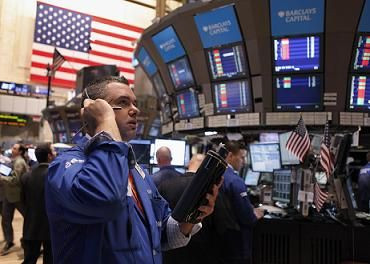Fed QE Tapering Will Not Cause 1994-Style Bond Market Sell-off, Derail Economic Recovery

News that the U.S. Federal Reserve may start to taper its $85-billion-a-month quantitative easing program later this year has sparked a sell-off across the markets and has left investors fearful of another 1994-style bloodbath.
Among those who have taken a hefty hit by the recent sharp rise in bond yields is bond king Bill Gross, founder and co-chief investment officer of Pimco. He also manages the Pimco Total Return Fund, the world's largest bond fund, with more than $285 billion asset under management. The fund has shed 3.79 percent from its net asset value since the start of June, according to the Wall Street Journal. Investors withdrew $1.32 billion from the fund in May, the report said, the first monthly outflow since 2011.
The yield on 10-year U.S. Treasury note touched 2.66 percent Monday, the highest level since August 2011, before sliding back to 2.54 percent on Wednesday.
However, Capital Economics’ Paul Ashworth believes the recent surge in Treasury yields is unlikely to develop into a 1994-style bond collapse, principally because the outlook for monetary policy is completely different.
Furthermore, Ashworth added that the recent rise in long-term interest rates will not derail the recovery, pointing to the fact that the 1994 surge did not end in recession, but rather was followed by five years of “unusually strong economic growth and unprecedented gains in stock markets.”
The ‘1994 Moment’
Back then (1994) bond yields spiked for 12 months and cash poured out of bond funds in droves, leaving investors who held Treasuries and other bond instruments with big losses. Two-year Treasury yields moved from under 4 percent in late 1993 to close to 8 percent by late 1994, while 10-year bonds went from 5.5 percent to 8 percent.
As Ashworth notes, 1994 would seem to have many parallels to today: a longer-than-usual recovery, complicated by a prior housing collapse and the overhang from the savings and loan crisis.
But the differences outweigh the similarities.
For starters, the economic climate now is vastly different from that in 1994. Once the economy did begin to strengthen at the end of 1993, it did so robustly, with gross domestic product growth rising to 5 percent. The unemployment rate dropped below 6.5 percent in early 1994 and was down to only 5.5 percent by early 1995. Worried about the possibility of higher inflation, the Fed felt compelled to put monetary policy back on a neutral footing.
The current recovery, however, is a completely different story. On Wednesday, the Bureau of Economic Analysis revised down its earlier estimate of 2.4 percent growth for the first quarter of this year to just a 1.8 percent annualized pace. Economists had expected no change in the BEA’s third effort at estimating GDP, and such sharp revisions are rare in a final estimate. Meanwhile, the unemployment rate is hovering around 7.6 percent, suggesting that there is still a large amount of unused capacity in the economy.
Second, the Fed is getting better (relatively speaking) at communicating with the public. Back in February 1994, the Fed was “bizarrely opaque,” according to Ashworth, saying only that it planned to take some actions that might result in a “small increase” in short-term money-market interest rates. In reality, monetary policy tightened considerably in 1994, with policy rates rising by 3 percentage points. Moreover, before that first meeting in early 1994, the FOMC never issued a post-meeting statement or let the markets know what particular level of the funds rate it was targeting. Market participants had to discern shifts in monetary policy from the Fed's open market operations.
“In trying to prepare the bond markets, the Fed probably only made things worse, since it immediately made investors wonder how bad things were going to get if the Fed actually had to announce publicly that it was raising rates,” Ashworth said.
The current-day Fed Chief Ben Bernanke, by contrast, is communicating frequently and clearly, letting investors know the exact unemployment targets to which the Fed is pegging its actions. He said during last week’s press conference that scale-backs in the asset purchasing program will only happen if the economic data gets better. His new rule of thumb: Unemployment will be around 7 percent when the Fed brings QE to a halt. The Fed is also taking a completely different approach. It’s not looking to tighten rates for some time, but only to scale back asset purchases. What’s more, it's very unlikely that the Fed will dump its major Treasury holdings on the market at any point in the next few years; it’s already said, in fact, that it’s willing to buy again should the market become “disorderly.”
Under those circumstances, Capital Economics expects the eventual increase in Treasury yields to be much more modest. The 10-year yield should finish the year at 2.5 percent, before rising gradually to 3.0 percent in 2014 and 3.5 percent in 2015. These yields are still low compared to historic standards.
Moreover, financial market turbulence usually turns out to have much less impact on the real economy than the headlines at the time might suggest, Ashworth said. Even the much larger increases in U.S. bond yields in 1994 were followed by five years of unusually strong economic growth.
This is not a repeat of 1994. It’s 2013.
© Copyright IBTimes 2024. All rights reserved.






















